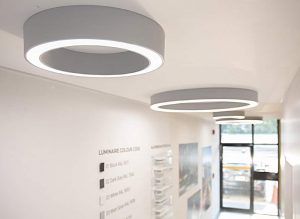LED lights can be significant energy-savers and rate-cutters. LEDs will deliver exceptional service and performance. LED lighting is simple to install, requires little maintenance, and has a long life span.
Consider these steps when installing LED lights into your wet areas:
- The junction box housing all wiring and connections should be at least 8 inches high and 48 inches away from the edge of the pool.
- All light fixtures and metal objects must be electrically bonded within five ft of the pool.
- The underwater lens or wet niche must be installed at least 18 inches below water level. The AWG ground connector must be used to secure the lens.
- Place each light fixture in a large area to provide water illumination with equal brightness. Make sure you have made all electrical connections.
- The pool lighting circuit includes a Ground Fault Circuit Interrupter for line voltage fixtures and a suitably rated circuit breaker.
These steps will help you complete an LED lighting installation in both dry and wet areas. The final step is to test the LED lighting’s validity and performance after the installation has been completed.

The pros and cons of installing LED lights
Pros
- It is easy to install and change: There are very few steps required to install LED lighting. They fit easily and can be changed without difficulty. You don’t need to drain your pool water for the underwater application.
- Low initial cost: LED lights can be installed at a low cost. The average cost is between $400 and $900.
- Cool and even brightness: LED lights create a pleasing aura, without any glazing effect. It spreads light evenly throughout the surrounding area.
- Safety The Led lights operate with the same voltage that a car charger so there are no risks of electric shocks or other electrical incidents.
Cons
- Periodic replacement of the bulb: The LED bulb is typically good for between 7-15 years, and it’s also the only part that should be replaced periodically. Replacement costs will be between $200 and $400.
- Dimmer: An LED can’t be used with a standard dimmer. To dim the LED light bulb, a highly rated dimmer is required.
- It is difficult to choose because manufacturers offer different shades of the same color with the same Kelvin rating. It is therefore difficult to find the right color for LED.